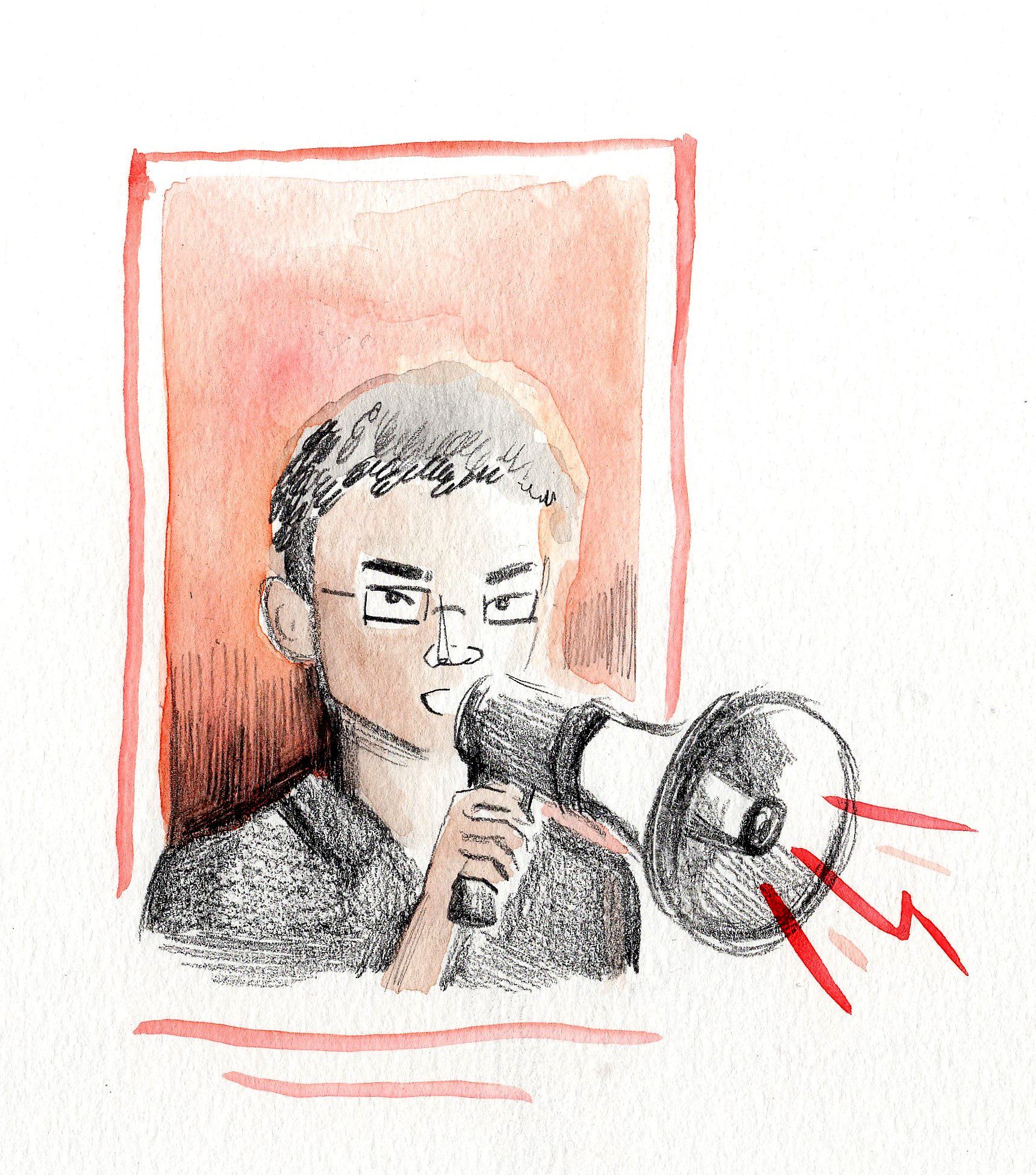
Any story of success, as any relative or friend will tell the aspiring but beleaguered artist, begins with rejection. JK Rowling’s extremely famous Harry Potter franchise (yes, you heard correct, franchise—it’s no longer just a book series) was rejected twelve times by major publishing houses. Stephen King, after he became Stephen King, mailed his rejection letters to the publishers who denied him. Octavia Butler, in her essay “Positive Obsession,” tells us, “I spent my teens and much of my twenties collecting printed rejections.” Trying her hardest to get past the rejections, she even found herself duped into spending $61.20 on a fake reading fee for a fake agent.
I want to think my story of success will begin like Butler’s—getting duped at least once, collecting the emails of rejections like they are badges of honor. I would like to imagine it could be on the Stephen-King level, too, but I feel myself a bit too modest to think that. In the meantime, I dump my essays into every slush pile imaginable hoping against hope for the best. I think of the other names in the slush pile, the names of my competition. I imagine there to be a lot of Johns, a whole lot of Katherines, a few Jamals, even fewer Marias. I think my name might stand out among the crowd but standing out, as standing out does, makes demands of you. Standing out requires standing out in certain kinds of ways for the needs of certain kinds of people. Stories must be written in particular ways to appease particular audiences. Language must operate according to particular guidelines set by those who craft such guidelines. Diversity is such a double-edged sword.
Most recently, the best actually happens to this gay, fat, poor, MexiRican boy from New Jersey.
This minor success story begins, like they all begin, with a rejection. A month or so ago I submit an essay into the slush pile. I feel strongly about this essay, this essay I wrote on the writing classroom and how we judge writing according to particular kinds of sensibilities. I feel bold about its merits; I feel its argument is an important one to make. Three or so weeks after submitting it, I get an email with the usual opening lines of “Thank you for submitting you work” knowing full well the rest of the email is an automatic message stating the piece is not accepted. For some reason, I don’t give up on the essay. I feel it worthy of my continued efforts though my mental health is not in a state to handle an over-abundance of rejections. Coincidentally enough, an editor of the same magazine that rejected my essay through the online submission portal has an open submission period, where writers are invited to email their essays to him/her personally. I email over the essay thinking I have nothing to lose by trying and in two weeks I have an answer: The essay is accepted for publication.
Before there can even be excitement, before I can even relish in the acceptance ambience, there is confusion. Why does one say yes when the online submission manager says no? The question does not remain a question for long.
*
Not all rejections have to be cold and calculated and automated. “I really enjoy the style and voice of this essay,” one rejection letter reads, the opening line throwing me off from the norm, “but it’s not really grabbing at me. It’s really just my subjective taste and someone else probably feels differently. Good luck with your writing endeavors.” Another begins more to the point, “Thank you for giving us the opportunity to consider your work. The piece has much merit but is not exactly what we are looking for at this moment. We wish you the best with your writing.” Funny how the emails which took someone time to compose, the emails writers always complain they wish they got more of, scald the worse.
But questions must be asked: What constitutes someone being “grabbed” in their attention? What is the editor’s “subjective tastes” that bar them from not liking a piece enough? Who is this “us” and “we” who are not looking for a piece at the moment? My essay probably didn’t appeal to these folks for whatever reason. Fair enough. The subjective, though, is the personal, and the personal is always connected to the body which produces subjective tastes. Our tastes are not created in a void. They are not a universally applicable phenomenon. In the world of writing, “diamonds in the rough” are diamonds because someone deems them to be so, but not all diamonds look the same or are valued the same. Our histories and educations and upbringings and inclinations determine our sensibilities. We are trained to read in certain ways and trained to judge in certain ways and trained to create in certain ways. Anyone who has grown up in the United States education system will know this well (or, odds are, not know this well because we are not taught to grasp sensibility). We can read Chinua Achebe’s oft-taught high school text, Things Fall Apart, and somehow never talk of colonialism. Excerpts from Martin Luther King Jr.’s speeches are given in middle school classrooms because they feel heartwarming and promise racial harmony, but students are rarely given Malcolm X’s volatile and spellbinding autobiography. Sandra Cisneros’s The House on Mango Street, in the hands of the freshman composition professor, somehow affirms the greatness of the United States and the even greater greatness of the American dream we are all capable of achieving. Don’t even get me started about how a graduate-level modernist literature course can somehow overlook all the daring and challenging black writers of the Harlem Renaissance.
Rejections are doled out on the basis of sensibility, but the sensibility of editors, like the sensibility of our teachers, who select certain texts and teach them in certain kinds of ways, is something we rarely examine.
One editor selects my essay, and the online submissions reader does not. After a bit of research on the website, the editors in charge of sifting through the slush pile all have names that sound similar, similarly European by design, headshots all displaying a color of skin in synchronicity. The editor who accepts my essay looks nothing like these folks. This editor champions marginalized voices on their social media every single day and addresses issues of representation in publishing. The others occasionally post something about diversity and its importance, but other than that it’s .gifs of cats wearing birthday hats and tweets about their coffee orders that morning. Someone’s sensibility can easily be deciphered from the life they live on the Internet.
What do we do when the subjective tastes and sensibilities come from bodies which all look alike, which all tweet alike, which all endorse writers with similar styles? The slush pile is a slush pile because the writers in it are all writing about their cats, vacations to Maine, and the perils of online dating. We are taught to believe these are relatable stories, are universal. Last I checked, I am not a fan of cats, I have never been anywhere near Maine, and online dating is a particularly fun way to mess with sexually overeager men. The dread editors note online about having to go through slush piles is the dread of having to fish through content that appears in many shades of white. I can only imagine how overwhelming this is. How do you find a diamond in such roughness? Nevertheless, the content present in the slush pile reflects back similarities to the editors reading through them. This creates the dread and monotony so infamously cited across the Internet. The editors, then, are discoverers in a barren landscape, setting out against all odds, Columbusing for gems that shine and scintillate with an intensity that is not too blinding for them. They are searching for standouts that standout just a bit, not too much. If they do scope out a different shade in the slush pile they expect it to behave in certain ways. Too much Spanglish is off-putting, too many sentences that mimic the spoken word is uncouth, too much experimentation with language is not sellable. Sense must meet with sensibility. They want good diversity, they want to diversify in amicable ways, but they do not want their sensibilities to be challenged, to feel the discomfort of coming face to face with words that speak of the whiteness we must all live within. For this would mean they would live in a world where the rug is pulled from under them, much like how the world is for those whose shade of brown or black stands out dangerously in slush piles of white.
*
The fun really begins when the submit button is pressed. The digital data transfers at the speed of light a 2,000-word essay into the slush pile. Is there a sound made when the words in brown land against all that white? The writer of color now must waver between extraordinary doubt in their skill and even more extraordinary doubt in their ability to communicate that skill. These feelings are nothing new. We recall those elementary school teachers who told us our ways of speaking were incorrect or unintelligent or ghetto. We remember that experiment on the page we tried to do to craft our voice, to find our style, and to be met with nothing more than the harshest of criticisms—an entire grade deducted, a worthy literary mishap. The recollection of college professors telling us we are not intellectually sophisticated enough, or graduate-school worthy, plagues our waking moments. The memory of a teacher, a social worker, a friend, a bully, a relative, a guidance counselor, telling us indirectly—yet so directly—that we are not good enough to do X, Y, and Z is relived in vivid detail. The dismay in knowing this sensation is nothing new rarely sinks in because we are taught this is an ordinary sensation. Rejection has to be felt, rejection is natural, rejection is universal. Every writer must experience it. The hazing everyone agrees to. Universal experience, sure, but to what degree is its impact felt and whom does it serve to hurt the most?
When an online submission manager operated by white bodies rejects an essay of mine, and an editor of color does not, I tend to jump to the race card real fast. But I am disinclined to do so because such a claim ignores their whiteness—such a claim allows their whiteness to go unchecked. When the “race card” is played, they get off too easy and I do not. Then, the onus is on me to live up to that racism, to represent it, to articulate it coherently to those who it is brought against, those who would say I am exaggerating and over-reading to the situation. To reframe what happens around sensibility pushes the responsibility on the white bodies who operate the submissions systems, on the white bodies in charge, on the ways in which white bodies read and value, on the ways in which their tastes are tied to the whiteness of a Western culture which has deployed “good taste” in the name of conquest, colonialism, enslavement, war, and policing racialized bodies for hundreds upon hundreds of years. Sensibility is racialized. Sensibility is political. Sensibility is being in the world. What sensibility is not is subjective, or objective, or somehow removed from what constitutes us as people. If we have learned anything about the world in the twenty-first century, it is that the personal is political and the political is personal and the human is a political being. There is no human who does not derive from the politics which have created them. There is no human who has never come face to face with whiteness, white or otherwise. We drown in seas of white, yet have no language in which to say we are drowning.
The politics of whiteness are at precarious place. White writers, much like the white population at large, feel resentment towards the sudden browning of the world. They adopt Asian- or Latino-sounding pen names to break through the slush pile. They want to write first-person narratives from the perspective of a person of color and hide behind the shield of “art for arts sake” for doing it. They even go so far as feel they are not being represented, that they are no longer in vogue, and they feel all kinds of animosity when marginalized writers take home most of the awards one award year. White resentment shapes this second decade of the twenty-first century more than any kind of white feeling.
The concern is not that we address whiteness but how we address whiteness. White people who feel themselves liberal, who feel woke about current events, who vote Democrat, and who preach diversity have no issues with talking about whiteness, they let their friend speak of microaggressions, or enjoy the lecture on African American aesthetics in twentieth century literature, or tweet out in support of immigrant rights. They love a good convo on denouncing the evils of Trump voters and those white people they think themselves so distinct from. They have no issue with the content, but the form is where the friction begins. Whiteness demands the palatable. Anything contrary to a narrative whiteness has seen it repels. Arguments raised against whiteness in a different style, stylized with a particular emphasis it has no knowledge of, whiteness trembles at what this might mean. Whiteness wants to see the politics of racialized lives simply and plainly and easily put. Whiteness wants bodies suffering and bodies protesting and bodies dying in a way that is comforting to it. Whiteness wants to keep retweeting or reblogging or rewriting the same old narrative without ever questioning its complicity in the narrative—its complicity in never trying to think outside such a narrative. If a Black football player takes a knee in protest against racial oppression then whiteness questions his methods, the style in which he protests. If anyone reframes the conversation of immigrant rights around the notion that the United States is a cruel and unexceptional place ever since its declaration of independence from the British Empire, then whiteness quivers at the style of such a narrative. If the content does not open itself up to interpretation immediately because of the form, if the content is not immediately legible as this or that because of the form, then the folks in charge get upset. They don’t like the tweet, they might unfollow you, they send the automated email, they reason out their dislike as something not appealing to their subjective tastes.
Living in a time when publishing, in particular, and our culture, in general, is flooded with articles, op-eds, videos, tweets, and every other format imaginable for relaying information, content is key. An event is unfolding and someone is already getting ready to publish a piece on it. Content supersedes form. The Internet, and its demands for the immediate and the brief, is all content. Content shapes our sensibilities in a large-scale way. For the writer of color, however, form is content and content is form. The two are inseparable. Claudia Rankine merges effortlessly content and form—her concentrative and methodical writing leaves us stopping to think, thinking on how to stop this whiteness unspoken and suffocating. Ta-Nehisi Coates builds fortresses for sentences, second and third and fourth readings required to even dare to scratch the surface of what it is he is trying to relay about the realities of the United States. Ocean Vuong’s popular, “A Letter to My Mother That She Will Never Read” is a lyrically gut-wrenching essay that teaches us how the expediency of language, language on a kind of speed, can undermine any solid footing on the realities of immigrant experience. These writers are dangerous writers. They pack more than a punch. They write sentences that are tricky, clauses which rewire meaning, paragraphs of prose contorting the means in which we think. They offer no hasty or ready-made solutions to the problems of our world. Their prose does not give themselves over to interpretation without a fight, if ever they give themselves up. The Rankines and Vuongs of the world make us work, they make us think, they make us imagine. The sensibilities of whiteness do not want us to work, do not want us to think, do not want us to imagine outside of its bounds. Whiteness fuels itself on imposing limits on what is conceivable. This is what defines it, after all.
I cannot help but wonder what other essays or writing by folks of color didn’t make it through the slush pile. I cannot help but imagine how many voices have been silenced by the specter of “subjective tastes.” I cannot help but think of all the bodies who gave up on a dream or a job or life when they were told no because someone in a position of power wasn’t “grabbed” by their style of being. Thinking sensibility, and its relationship to whiteness, challenges not only white folks but everyone. Whiteness is a reproducible logic. This is how it endures. We carry out its orders in high-school classrooms, in Twitter feeds, in the slush pile of an online magazine, in the rejection letter sent out. The effort must be more than just inclusion and diversification. We must think upon our tastes, upon the ways in which we find pleasure in the word, the ways in which we aesthetically judge the world around us. We must reject the standards which we have all been taught to accept as the norm. There begins our challenge.
***
Rumpus original art by Aubrey Nolan.







